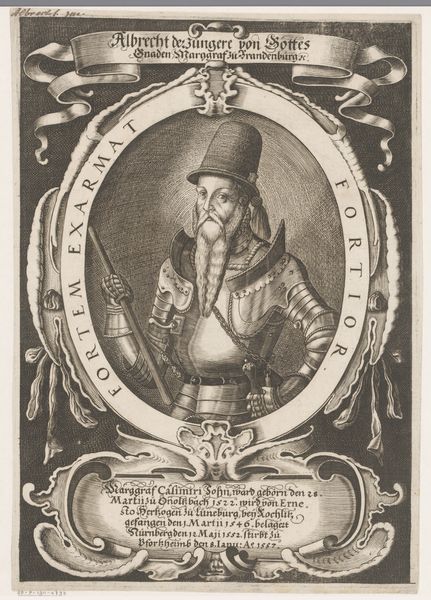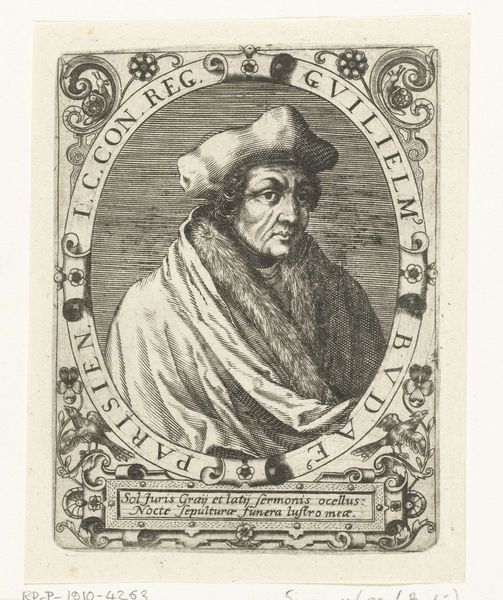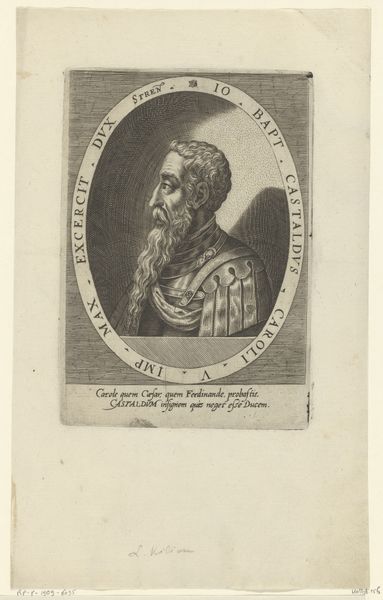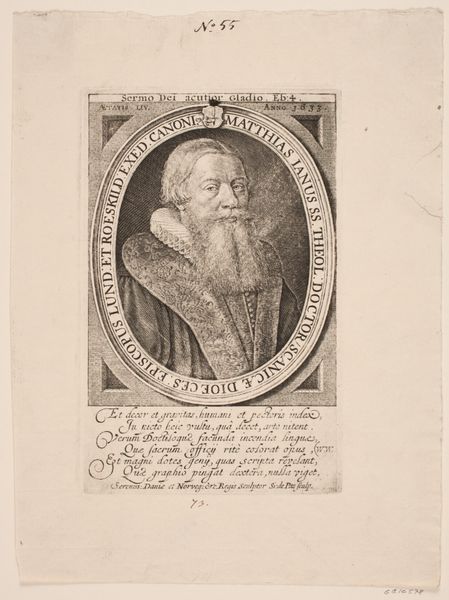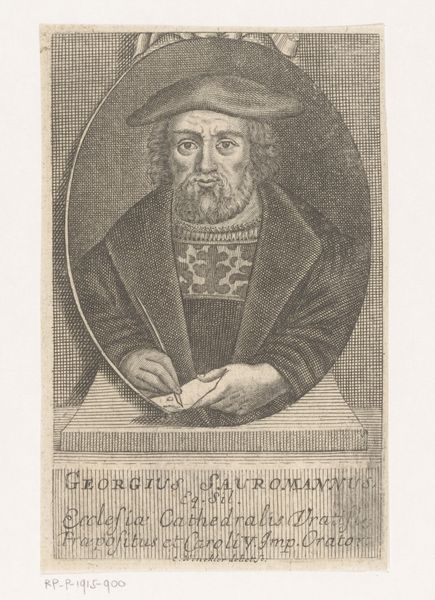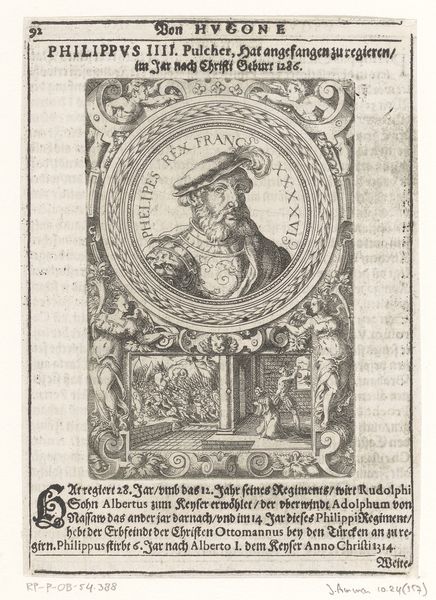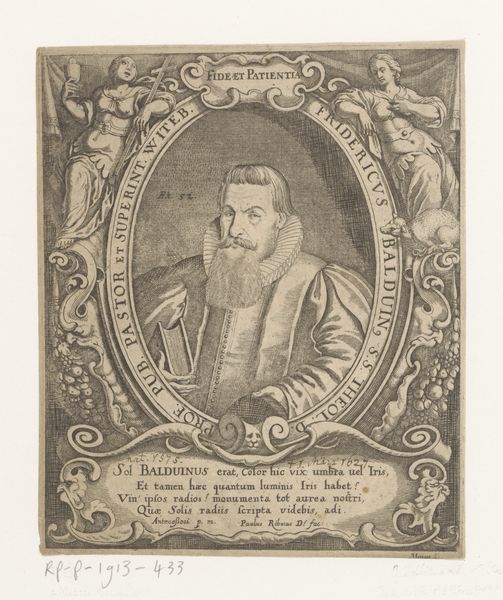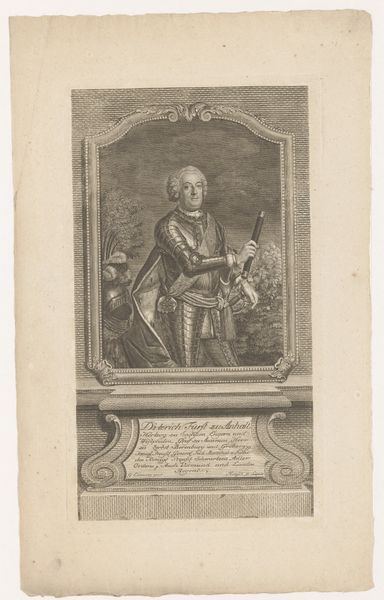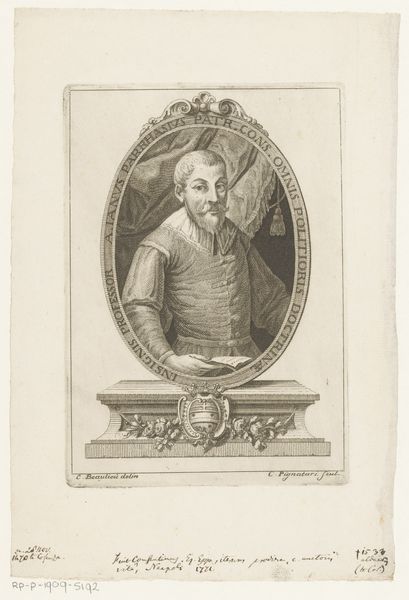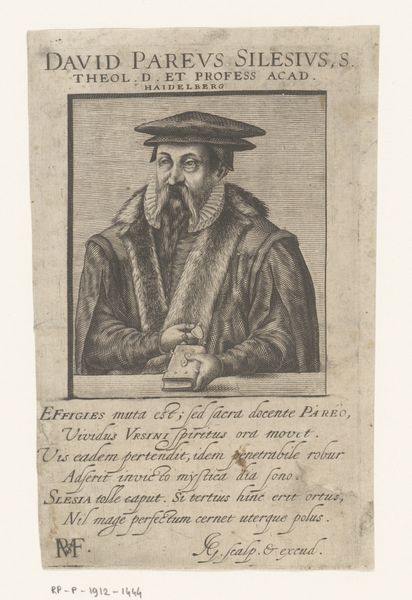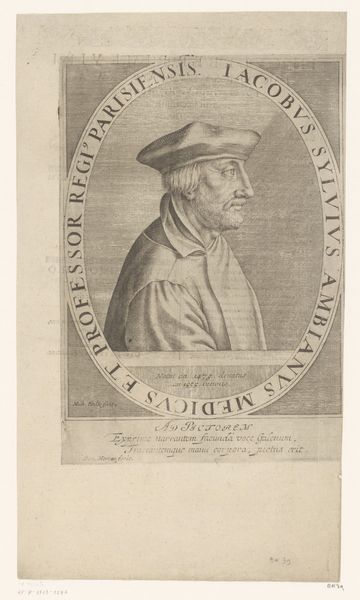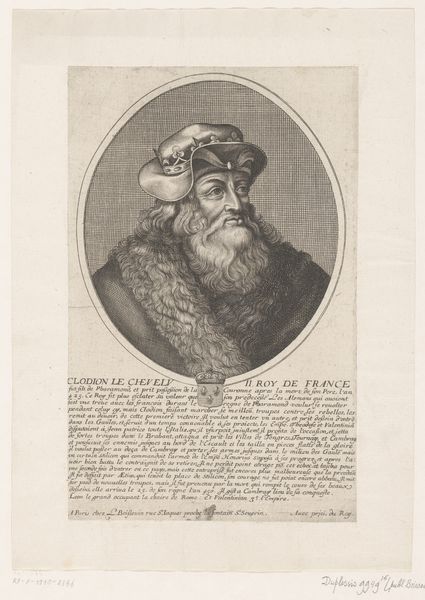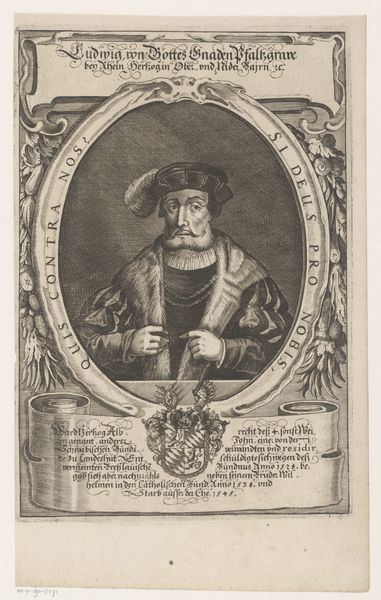
engraving
#
old engraving style
#
mannerism
#
portrait drawing
#
history-painting
#
northern-renaissance
#
engraving
Dimensions: height 212 mm, width 176 mm
Copyright: Rijks Museum: Open Domain
Editor: This is Johann Hogenberg’s "Portret van Theodor Beza," an engraving from 1595. It has a certain severity to it, from the sitter’s somber expression to the rather elaborate inscribed frame around him. What strikes you when you look at it? Curator: What grabs my attention immediately is the sheer labor involved in its production. The fineness of the lines, the detail in the lettering, the layers of symbolic meaning all meticulously etched… Consider the artisan’s process here, replicating images, propagating ideas of faith, scholarship and influence through the reproducible medium of engraving. Editor: That's interesting. I was more focused on Beza himself and the symbolism surrounding him with Prudence, Faith, Constancy and Patience shown in medallions, virtues perhaps to emulate. Curator: But doesn’t that symbolic framework *itself* rely on the material conditions of its creation? Each figure, each letter, each symbolic element had to be painstakingly incised onto the plate. Consider the economics, the patronage, the dissemination… Hogenberg was participating in the very construction of Beza’s image, crafting him as a symbol. How did this method contribute to the rise of the northern renaissance and the spread of reformed ideas at that time? Editor: So, by focusing on the material process, we get a better sense of how images like these functioned in society at the time? Curator: Precisely. It allows us to see beyond the surface representation and understand the active role of artmaking in shaping cultural and intellectual landscapes. Editor: I never really considered the role of reproducible engraving beyond just…reproducing images. Now, the layers of meaning connected with print production itself become more interesting to consider! Curator: It's all connected – the hand of the artist, the circulation of materials, and the transformation of cultural values. It invites you to think differently.
Comments
No comments
Be the first to comment and join the conversation on the ultimate creative platform.
